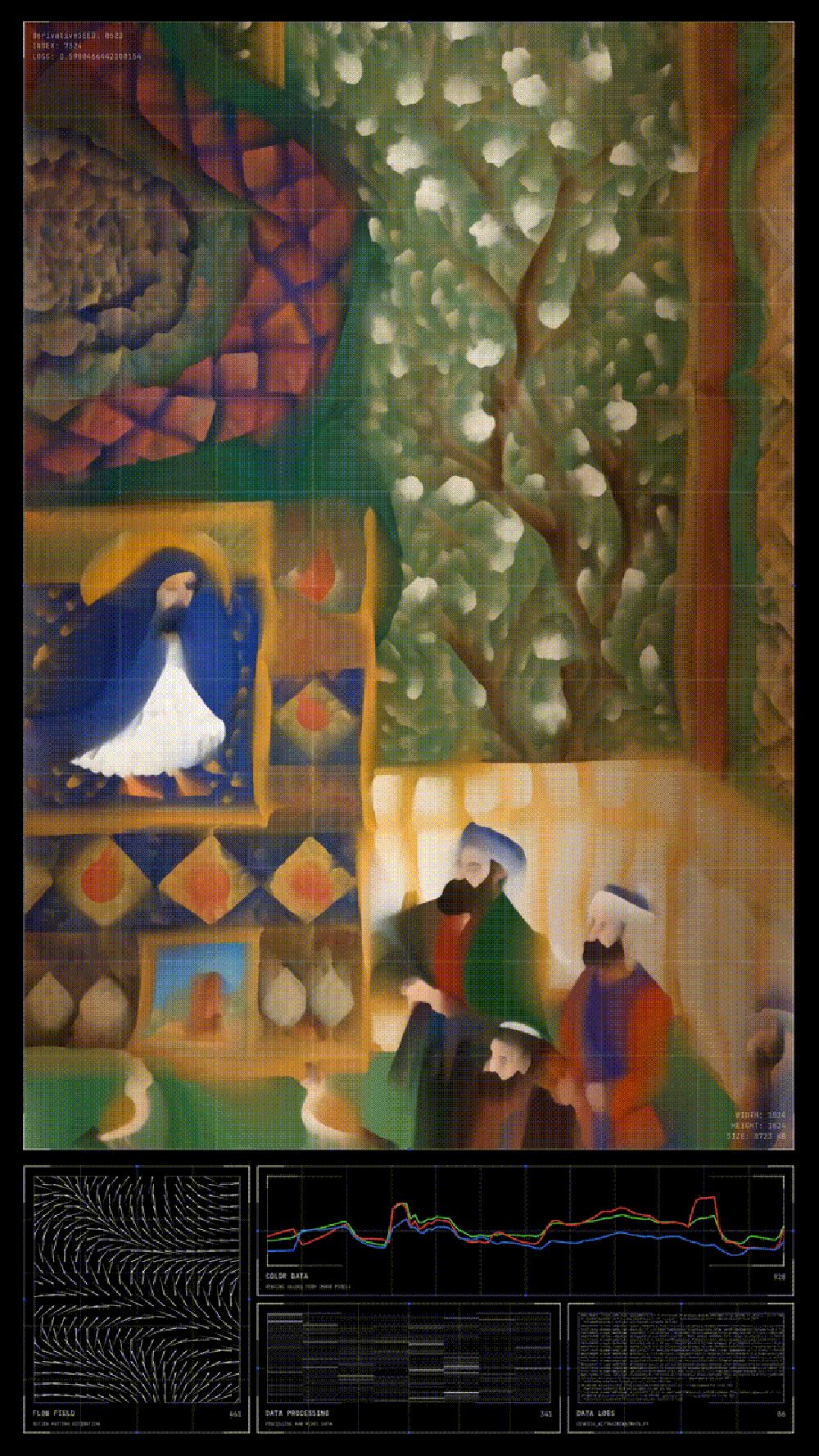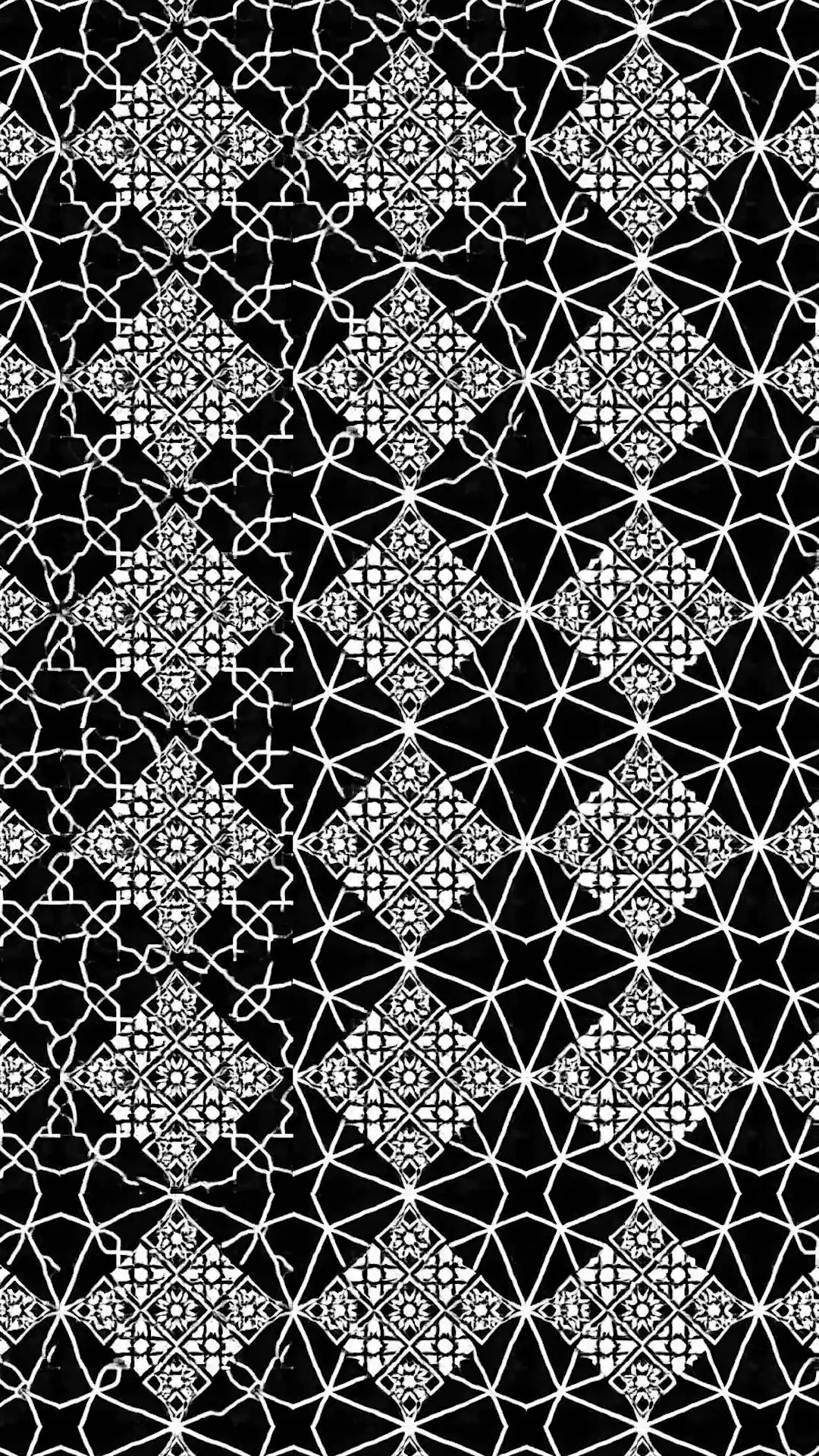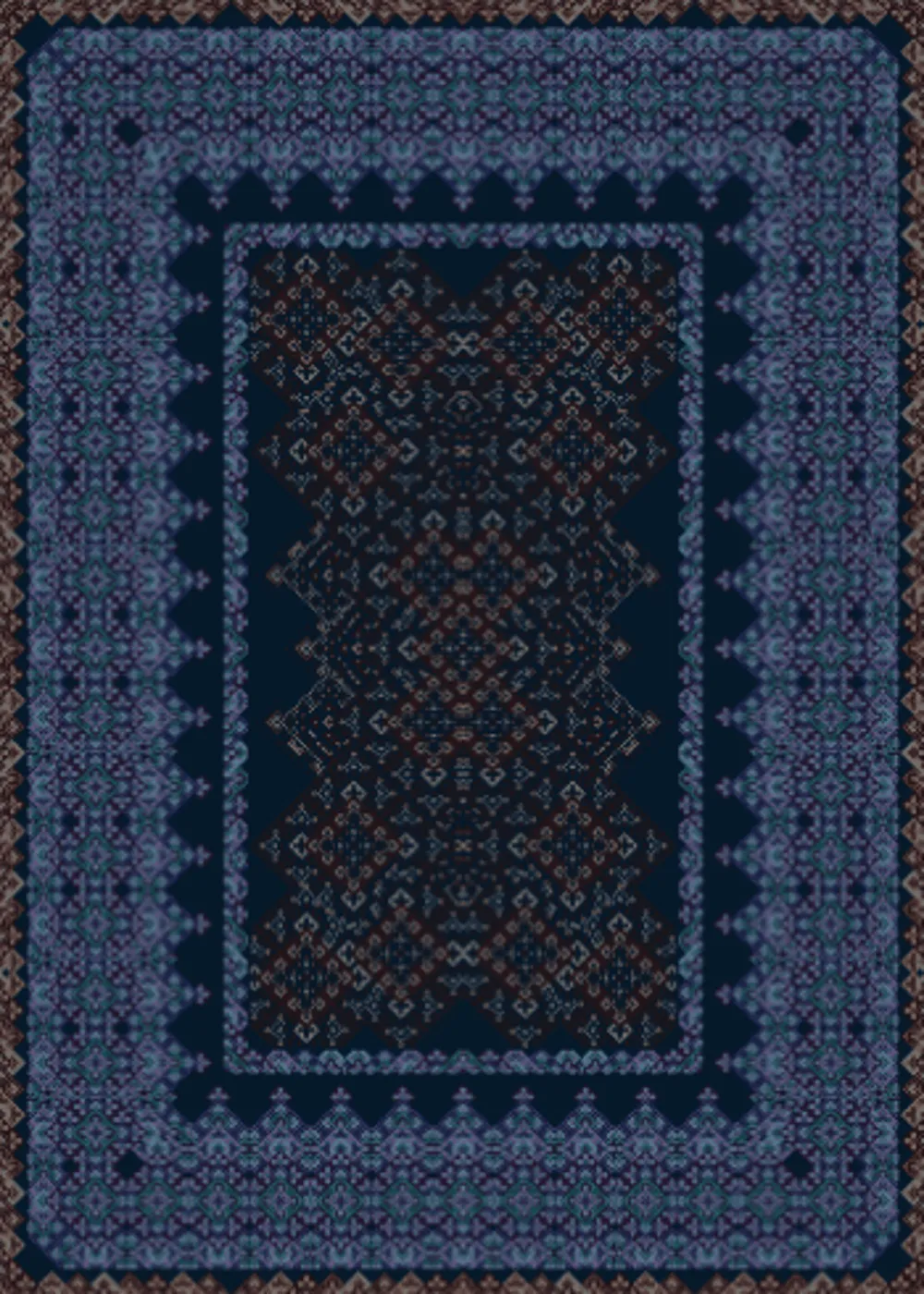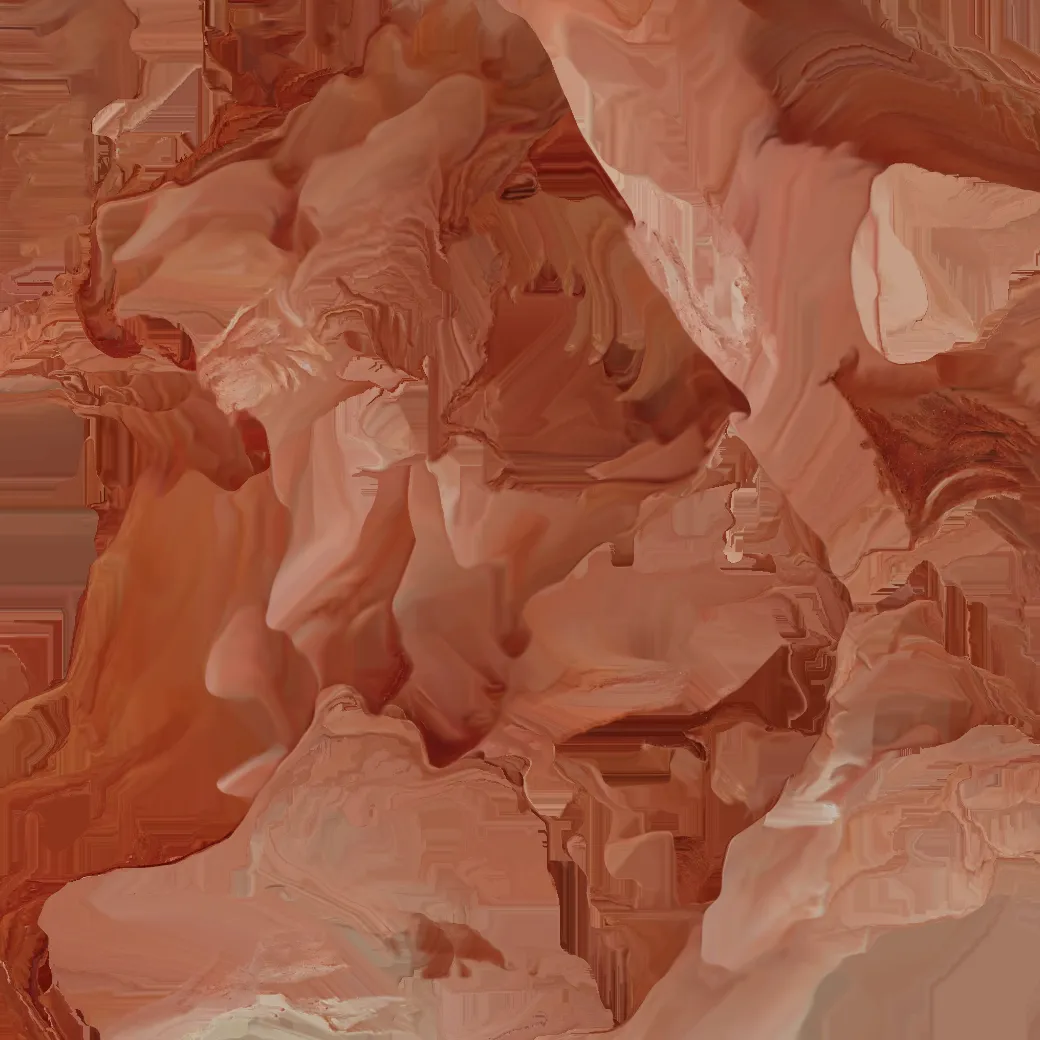Subscribe to get the latest on artists, exhibitions and more.
Dreaming in Latent Space: Orkhan Mammadov's Trilogy

Orkhan Mammadov in conversation with Ivan Zhyzhkevych and Leyla Fakhr.
IZ: Welcome everyone to this conversation, and welcome Orkhan. Firstly I want to dive into the overall concept of the trilogy of series you’re releasing; Rêveries, Lost Memories from Latent Space, and Visions.
OM: Sure. This trilogy is where I explore how neural networks think while looking at the classical images that shape our culture. Using a dataset of around 16,000 images I first processed that dataset, using a CLIP model and I extracted 150 clusters, common patterns that we learn from the dataset and the mythology inside the landscapes, the portraits.
Using these clusters as an informant to the conditional GAN network, I trained individual models for each cluster, and each model is producing visuals that reveal how AI moves through its own latent space.
What makes this project different is that I'm not showcasing a final image. I am inside the image itself, visualizing the process that's happening inside the neural network. You see these blocks over the artworks which are the heat maps where actual activations from the different layers in the AI model happen, and they show how and where the machine is focusing its attention while creating. It's like watching how the machine is imagining or dreaming.
IZ: Where did this dataset come from?
OM: The research inspiration becomes some moment, some picture that defines the whole series.
So I had two options to choose the dataset. One was Orientalism, which I already experimented with twice, but there was like this fire inside, I needed to explore Renaissance paintings. When I was studying at the university, I was doing the presentation, learning art history, but I never had the opportunity to include that in my own practice.
Usually I take data sets from the public domains. Either I collaborate with the museum archives or cultural foundations, or I collect it by myself.
IZ: When you were younger and visiting museums or galleries, what would capture your imagination?
OM: My obsession was always more than context and history, but more how artists made their work, the process, and how I can hack it, how can I be in the artist’s mindset.
It’s interesting, when you are in the visual world, you get this visual poisoning, and your own neural networks start to give you AGLs about the mixing of memories in your brain.
I realised when I looked back at memories I was mixing the stories, I was adding things that were not there and by the time this kind of phenomenon stuck in my mind as a cognitive science that why we do this, how memories are fragile and how it affects us.
We construct and reconstruct memories, create false memories by ourselves, we are weak in comparison to AI which will be much smarter, more convincing, and able to put these seeds or ideas in our brains.

LF: So with the three series in this trilogy, Rêveries, Lost Memories from Latent Space, and Visions; why are they separated from each other, and how are they different?
OM: They are demonstrations of AI tools, or AI history. My first goal was to highlight the fragments or distortion of the brain and, and the coming threads in the future, how AI will be super convincing. Rêveries is based on the most basic AI infrastructure, the reverse engineering of neural networks, and the latest series Visions is my most advanced and ambitious project that is a custom AI diffusion model that is a new version of the Flux Model. It allows for super fast image generation, almost in real-time. And the Lost Memories from Latent Space is the style GAN, my most favorite tool.
Every artist can have paint and a brush, and every artist will use them in different ways. My idea is never to give hyper realistic, super crispy images. My idea in Lost Memories is showing the inner layers of the neural network, not just the final image it produces.
For me there's no beginning and the end, everything is one whole. If you don't see the infrared light spectrum, that doesn't mean it doesn't exist. You cannot deny that in AI also, there are several layers of the visual outputs that form the final output.
LF: So as you were saying earlier, in Lost Memories from Latent Space there's the heat maps and then there's all these squares with different sorts of codes that seem to be popping up. What are those numbers and those codes? Are they actually signifying something specific, or is this an aesthetic choice?
OM: So I call them blobs. These represent activations, areas where specific neurons in the neural network are firing strongly in response to parts to the generated image. So they corresponded to regions of high attention or a learned representation.
LF: Sorry, that you need to break that down. What do you mean by high attention?
OM: So imagine a machine has eyes that looks to its own visual world - we call that latent space. If you give it 10,000 images in a dataset to train, the model finds the most common patterns and features in the dataset, which is where its attention goes.
When you train the GANs with the dataset, imagine all the images merge in one huge space that you can look left and right, up and down, go forward like a pitch space and, and all images are merged with each other. So it becomes one unique piece, and then some part receives higher attention, the machine calls you to go there and visualise that part, and you are traveling inside latent space inside the neural networks, seeing how they visualize themselves between the neurons.
So the blobs corresponded to regions of high attention and learned representation within a specific combinational layer. In simple terms, I could say the network is noticing something important in these regions during the image generation.
IZ: After you've gone through this process, does it change your relationship to paintings in general, or going to a museum and looking at classical art?
OM: Yes. After working on the Visions project, I cannot look at any painting as I did before. My brain starts to work in AI mode. My eyes are like, I lost when it was real, when it was fake. Like I just lost it after three seconds. Lost Memories is totally different. I never see the one particular image or something in the Lost Memories, I see everything in one whole piece.
LF: What's interesting about Renaissance painting and a lot of classical compositions is that painters were trained to paint in a particular way. There were certain design systems and, almost formulas, a bit like the Hollywood formula. There's the beginning, and there's a climax as an end. And I think classical painting did have quite a lot of formulaic language, whereas I don't think that exists in contemporary work.
Would you consider training your model on contemporary paintings, or does the learning of the machine have to be specific to one type or one genre or one era?
OM: It depends on what kind of output you want to get. If you want to get very diverse, let's say the morphing that's going around the one topic, then you have to specifically collect a vast dataset like mine. Even the 16,000 I collected is nothing. Refik for example works with a dataset of millions. In the dataset you have to have the same image features. If it's trees, then everything has to be a tree, and you will have very nice outputs that represent what you want to intend to create. When you train the GANs with this kind of dataset, your output is also super seamless, it kind of looks like a dream, it goes from each other to each other.
But when you have a diverse data set of different categories or different visual styles from each other, and it doesn't represent one visual language, then I will say you will get like a nightmare. Like visuals that are super chaotic. It is an artistic choice actually.
I'm not tied to the art styles, but more to the process. If my work required contemporary art, I would definitely use it, but I get inspired to do something on my own. For example, with cultural research, in the near future I want to research, Shuba Kbo Tribe which has an incredible story. They're focused on the pattern generation of the carpet drug patterns. And it's like a very similar style called the cellular automata in the generative world. But google them, they’re mind blowing, and very focused on the culture, heritage, and natural patterns. It's very far away from my own culture, uh, but I really want to go and learn their works.
LF: So your research and the way you are training the machines, could this be something that could actually help in other areas? Your art is beautiful, but does it have function as well that could be used in certain areas of research?
OM: Yes. My father is a radiologist. He is a specialist in MRI. So we developed a custom software, to see how he could speed up the testing of pneumonia in the lungs. And it was used later in the research of the COVID patients in 2020.
It was inspired from training CNNs, or the CLIP model, with the simple pattern of pneumonia. So yes, incredible use cases in, in healthcare, in the military, in everything that you can see.

IZ: Within Lost Memories you developed a very specific soundscape and I'd love to learn about your inspiration to include sound design within the series.
OM: Yes it's the first time I used this technique. On most projects of mine everything is designed later on top of the visual. With Lost Memories, when I finished training the models, and I was watching the outputs, they were talking to me but without sound. I thought to generate sound for each of them, but later I thought how I could create sound using visual activity inside them.
So as the network is building the image, certain parts light up as I told you before, the areas of high attention. If the blob is larger, it makes the tone deeper, if it's moving fast the sound might be sharper or quicker. The result is that the sound and image are like completely connected to each other. One is kind of the pushing and the triggering to activate and, and whatever you are hearing, you are kinda, you hear what AI is doing.
IZ: Do you have any plans to include this process or to develop it further for Visions?
OM: Yes definitely. The immersive exhibition of Visions that will take place at the end of the year will be roughly an 18 minute, 20 minute experience. Originally I thought to release the three bodies of work together, but after speaking with collectors I realised they were too big to digest as a whole, so I decided to release them in three individual chapters so collectors can see the journey, understand the context, and decide what they connect with.
My goal was giving my collectors a small amount of pieces, with affordable prices, releasing Lost Memories alongside the exhibition in Istanbul and with Visions rewarding all supporters, culminating with the Art Club Museum Houston exhibition.
The goal is not to sell out immediately, but to find people who really appreciate and want to critique my work. With making these artworks, I also wanted to achieve some of my dreams and experiment with a way to transform and translate this digital thesis as physical artifacts and experiences that resonate with my vision.
There's an amazing artist called ACK who created an amazing, phenomenal physical show with Avante Art in Amsterdam. I saw the works in real life and it was mind blowing. I never saw before any digital print that can resonate with the depth of feeling of a painting, and I just found the studio which produced them, an amazing studio in LA with incredible craftsmanship that I will partner with. There’s 30 layers of unique painting, creating this 3D texture that I will use for Rêveries. Another is lenticular prints which is the perfect match for Lost Memories from Latent Space. And one of my favorite human beings and artists is Robbie Barrett. I saw his exhibition in Paris recently where he built small non-standard displays which were incredible to see, like an infinite object or frame, and it was screaming that it's supposed to be for Visions. Finally one of my greatest inspirations, he is like a mentor and I'm obsessed with his immersive exhibitions, is Refik Anadol, how the work lets you go inside and just lose the time and space perception.
So the trilogy, Rëveries, Lost Memories from Latent Space, and Visions will be turned into an immersive exhibition showcased in Art Club Houston Museum in Texas. I will use the artist proofs that I minted from each series.
LF: It’s really lovely to see how the trilogy is unfolding and to learn more about this technology and how complex and complicated it is. It’s really great how you've broken it down.
OM: One more thing I forgot to mention is the neural sketchbook. While I was creating artworks, I also was documenting each process through generative art and data visualization. I want to create this structure for the collectors where they can merge different kinds of data visualizations and create their own layouts that represent their own artworks. And this will be the reward.
IZ: Okrhan the scale of this trilogy is humongous. I feel so honored at Verse that we're able to present it and lead into a SOLOS with Visions. I also want to say a huge thank you to everyone who's supported the releases thus far, and a huge thank you to you Orkhan and to everyone who’s joined us today.

A note from Orkhan
In 2019, I opened a new chapter in my artistic practice, exploring contemporary memories of my cultural identity through generative art and AI. From that moment until May 2024, I fully dedicated myself to that line of research and experimentation.
But deep inside, another fire had been quietly burning. I became obsessed with the intersection of cognitive science and AI. The idea that memory is not a fixed record, but a creative act, always vulnerable to distortion, erasure, and invention. That idea excited me just like it did when I was a young artist first discovering this field. So I decided to pause the Cultural Heritage Period and shift focus to a new era:
Memory in the Age of AI.
To begin, I went back to where it all started - my earliest notes, experiments, and inspirations. The years 2014–2015 were transformative for me. I was like a kid discovering a secret world. The foundational AI papers from that time became my bible: Ian Goodfellow’s GANs, Leon Gatys’ neural texture synthesis, Yann LeCun’s CNNs, and Alex Mordvintsev’s DeepDream.
I finally decided to create the project I had dreamed about for years, but never had the time, budget, or team to make real. A project that asked the questions I had never dared to answer. This became a trilogy - three distinct chapters + one process-driven sketchbook documenting the full evolution. I called them: Rêveries, Lost Memories, Visions, and the Neural Sketchbook.
I always love to extend my practice and try new mediums and methods. In recent years I was inspired by several artists' practices and always wanted to try with my artworks in this trilogy.
They are:
- UV-textured surfaces like ACK's (for Rêveries)
- Lenticular prints like Yaacov Agam (for Lost Memories)
- Mini screen-based sculptures like Robbie Barrat’s (Visions)
- A full-scale immersive experience in the spirit of Refik Anadol.
It took me and a dedicated 5-person team a full year. Production, refinement, and curation from the ground up.
Here’s a quick look at each chapter:
Rêveries – An generative and interactive series. Faded visions from the edges of machine perception. Fluid, intuitive, and deeply poetic.
Lost Memories from Latent Space – A forensic journey into latent space. Renaissance specters re-emerge as clustered fragments, showing how AI forgets and remembers in layers.
Visions – My most ambitious, advanced AI workflow: A multi-sensory archive of the present, rendered by custom multimodal AI workflow into a living digital canvas.
Alongside these, the Neural Sketchbook will document the full behind-the-scenes-models, workflows, tests, and failures - like a living archive of the process, and will be airdropped to all collectors.
We’ve already begun collaborating with digital art festivals, immersive venues, and media art museums. The first show opened yesterday at the Istanbul Digital Art Festival. Showcasing the trilogy to thousands of people.
In this autumn Visions will be released and exhibited with SOLOS in London. We are cooking something phenomenal. Later this year, the full trilogy including their artist proof physicals alongside immersive experience will be exhibited at Arc Club Museum in Houston, Texas, for a year-long show.
Regarding the launch strategy: We launched the trilogy with Rêveries - at an affordable price point, making it a natural entry for collectors. Keeping the edition size low was a strategic choice, and it paid off.
Thanks for being part of the journey. This is just the beginning.
Orkhan
Orkhan Mammadov (b. 1990, Ganja, Azerbaijan) is an internationally recognized new media artist whose practice explores the intersections of art, science, and technology. Renowned for his pioneering work with artificial intelligence and generative art, Mammadov’s installations and data-driven projects transform the collective memory into immersive aesthetic experiences.
Educated in computer...
Leyla Fakhr
Leyla Fakhr is Artistic Director at Verse. After working at the Tate for 8 years, she worked as an independent curator and producer across various projects internationally. During her time at Tate she was part of the acquisition team and worked on a number of collection displays including John Akomfrah, ‘The Unfinished Conversation’ and ‘Migrations, Journeys into British Art’.
She is the editor...



